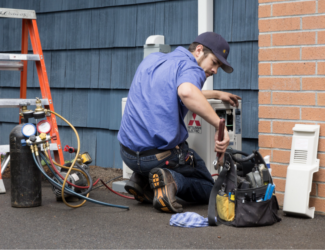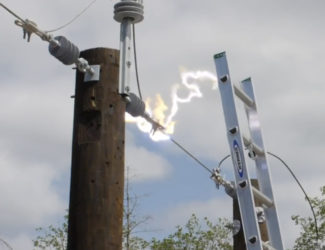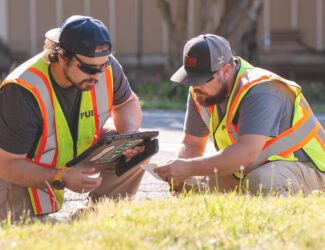
Grid modernization
Grid modernization encompasses many things, including upgrades to high-voltage transmission and distribution lines and deployment of new technologies such as distribution management systems, high speed communications, advanced sensors and energy storage.
The PUD’s grid modernization work will increase service reliability, grid resiliency and operational efficiencies. It enables greater use of clean, variable energy sources (such as wind and solar energy), establishes the automation and monitoring capabilities needed for distribution and transmission systems (see FAQs below) and helps promote energy conservation.
A key part of this effort is deployment of smart grid technology. It includes the integration and application of real-time monitoring, advanced sensing, communications, analytics and controls. Smart grid technology enables the dynamic flow of both energy and information to accommodate existing and new forms of supply and delivery. It provides a secure, reliable and efficient electric power system – from generation source to end-user.
The PUD’s current multi-year grid modernization project is the Connect Up program.
Key benefits:
- Improves reliability by allowing the utility to identify and isolate power outages
- Allows utility and its customers to better integrate green energy sources in the grid
- Enhances two-way communications throughout the PUD service area
- Facilitates integration of plug-in electric vehicles
Frequently asked questions
Why is the PUD upgrading its system?
The series of upgrades will help lay the foundation for a modernized grid system. It represents an evolution of the grid to allow for a two-way digital telecommunications network, substation automation and a robust distribution system infrastructure. It will help the utility and its customers realize greater efficiencies and enhance overall reliability. With the upgrades, during power outages, for example, the utility will be able to automatically re-route power and isolate problem areas before line workers arrive in the field to repair the damage. Ultimately, in the future, advanced technology will allow customers to better monitor their real-time energy use online or via a smartphone and obtain more detailed storm outage information. Additionally, customers will be able to better plan their consumption and incorporate small-scale generating sources such as solar into their energy supply.
How is the PUD moving toward a modernized grid?
The PUD is first modernizing its grid through infrastructure improvements on its distribution lines, its communication network and at substations. By concentrating initially on this automation, the utility is laying the groundwork to make a smooth transition to new technologies that enhance reliability, improve energy management and create additional operational efficiencies. In the future, new technologies will allow the PUD to pursue use of new metering technology and other programs for its customers.
How does new metering technology benefit customers?
New metering technology will benefit customers in multiple ways, including:
- It offers customers more detailed information about their electrical usage to help them make better decisions about their energy consumption and ways to save on bills.
- It provides faster outage identification and response, customers will see restoration times improve during power outages.
- It provides real-time data that helps the PUD better assess restoration work with the ability to provide more accurate restoration times in the future.
- It benefits the entire region as renewable energy adoption increases. It allows the PUD to integrate into its electrical system a broad range of locally-generated renewable energy resources, such as solar, biomass/biogas, small hydropower and geothermal. It also supports energy storage programs.
What’s the timing for the upgrades?
2010 – The PUD completed installation of 163 miles of fiber optic line.
2012 – Installation of automation hardware at 42 substations.
2013 – Installation of a wireless field area network and automation hardware on poles and substations in a 90-square mile demonstration area in the communities of Tulalip, Warm Beach and Lake Goodwin. It will allow the PUD to test automated line switches, capacitor banks and protection devices and other equipment, which is designed to automatically re-route power and isolate problem areas during power outages creating a “self-healing grid.”
2013– A Distribution Management System (DMS) will be operational for the entire distribution system enabling power flow analysis and creation of switch orders. The DMS will also enable automation of field devices within the demonstration area to better manage power outages and improve efficiencies.
2016– All of the PUD’s substations have automation hardware installed.
In 2020, these efforts were combined into the Connect Up program. For the latest information, visit the Connect Up page.
Are customers’ rates likely to change?
That is yet to be determined. Like all system improvements, enhancements to the PUD’s grid cost money. However, there are measurable benefits in terms of savings. There are numerous ways the PUD could cover the cost of these system improvements, such as financing them over a longer period. The PUD Board of Commissioners sets the rates for customers and any changes would require their review and approval based on a broad range of factors – including system improvements, cost of energy and other commodities, maintenance expenses, etc.







